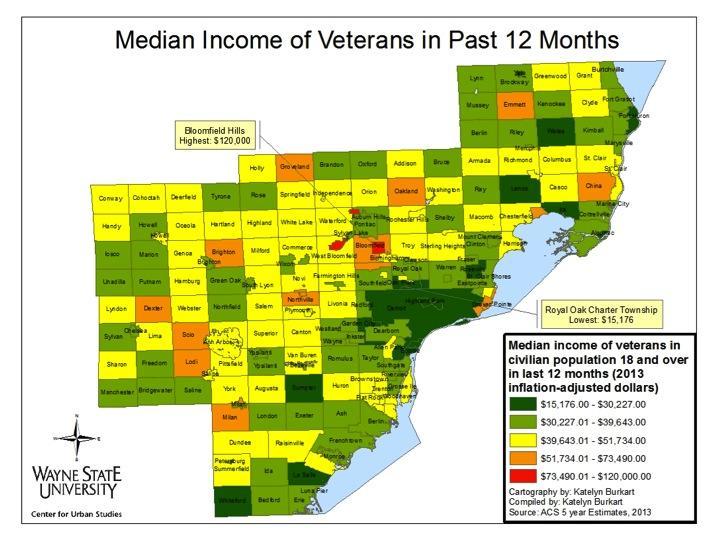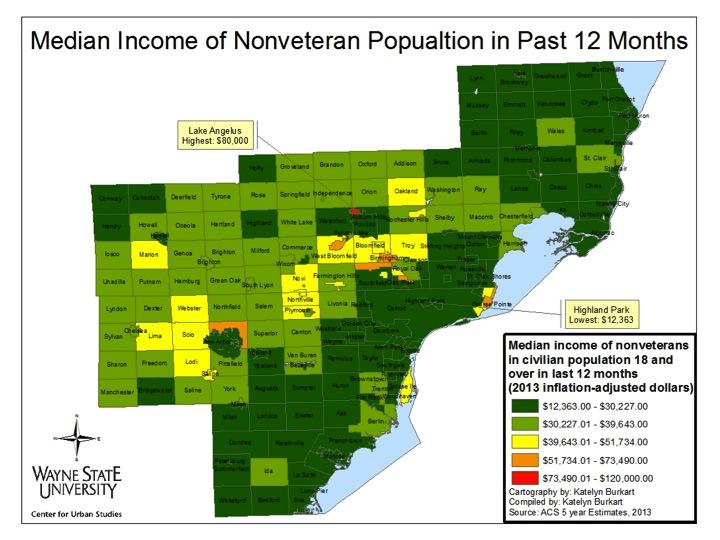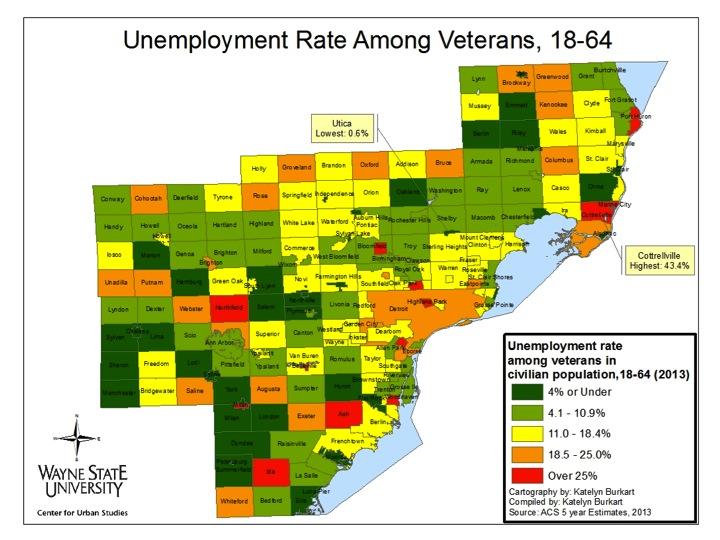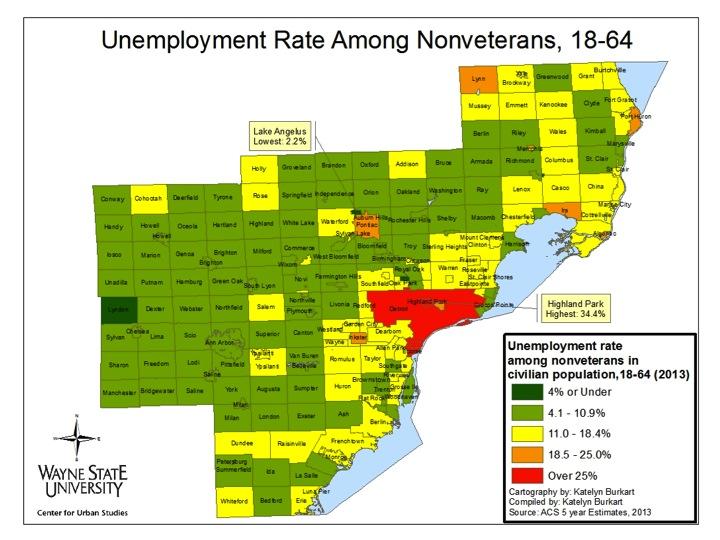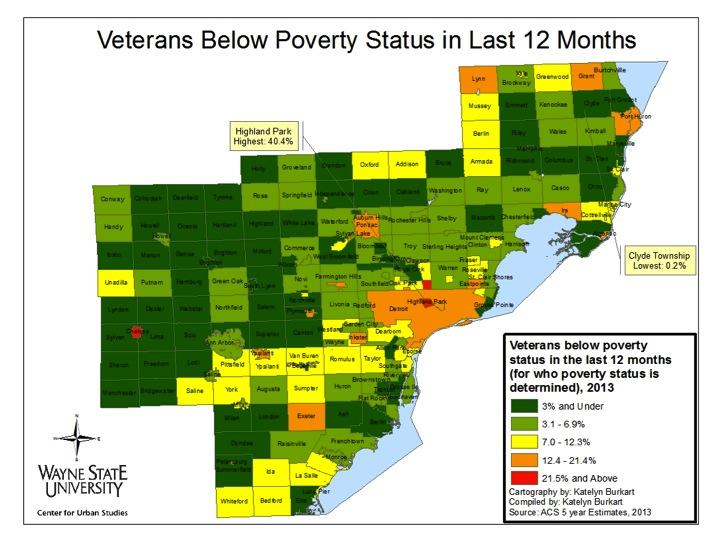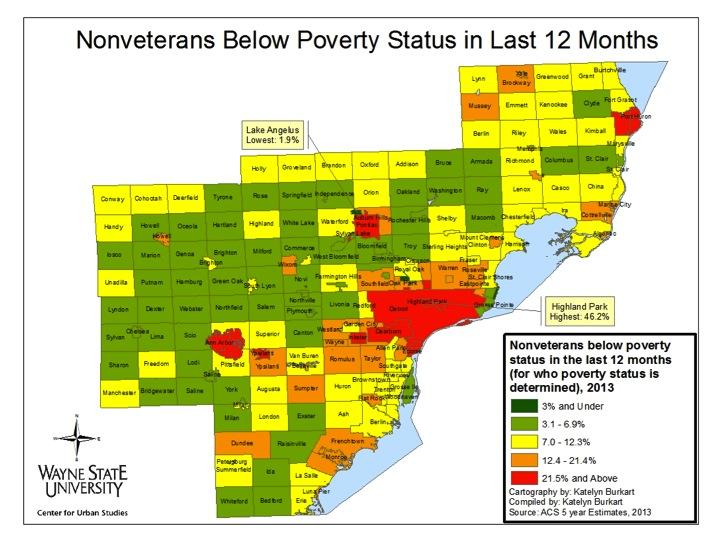Although it appears Detroit’s population is beginning to steady, the start of 2013 showed increased unemployment rates and zero growth for the number of building permits pulled.
•Since 2010 Detroit’s population has appeared to be steadying, only experiencing slight decline;
•For the tri-county area, the population’s in Macomb and Oakland counties have been increasing while Wayne County’s population has been historically declining.
•Unemployment rate increases, while the number of employed decreases. The number of auto manufacturing and auto parts manufacturing employees also increased from December 2012 to January 2013 though (monthly);
•Purchasing manager’s index decreased from January 2013 to February 2013 (monthly);
•The most recent consumer price index changes for all and all items less food and energy increased (bi-monthly);
•Building permits increase for Oakland and Macomb counties in January and February 2013, compared to the same months in 2012. In Wayne County, the number of permits in the first two months of year declined, compared to last year from last year to this year (monthly) . No building permits were pulled for Detroit.
Overall, the City of Detroit’s population has experienced a decline, going from about 1.5 million residents in 1970 to 677,891 in 2012. However, from 2010, when the U.S. Census Bureau released its most recent Census data, to 2012, the population has seemed to somewhat stabilize. From 2010 to 2012 there was a decline of 35,109 residents. This decline is based on 2010 Census data and compared with Southeastern Michigan Council of Governments data (2012). The biannual population estimates from SEMCOG are based on trends from area demographics.

Since 1970, Oakland and Macomb counties have experienced population increases while Wayne County has experienced a population decline. From 2010 to 2012 Oakland County’s population increased from 1,203,012 to 1,216,207. In that same time frame Macomb County’s population increased from 841,126 in 2010 to 843,435. Wayne County had a population decline of 1,815,734 in 2010 to 1,787,920.
All information is based on Census data, except for the 2012 data. These numbers are Southeastern Michigan Council of Governments data; the biannual population estimates from SEMCOG are based on trends from area demographics.

According to the most recent data provided by the Michigan Department of Technology, Management and Budget, the January 2013 unemployment rate for the State of Michigan was 8.9 per 100 people, which is the same as it was in November and December of last year. For the City of Detroit, 19.8 percent of the population were unemployed in January 2013; this is an increase 1.7 percent from the city’s percentage of unemployed in December 2012 .

The number of employed in the City of Detroit decreased by 2,043 people from January to February of 2013. From October 2012 to January 2013 there was a loss of 5,407 employed people.

The above chart shows the number of people employed in auto manufacturing industry in the Detroit Metropolitan Statistical Area throughout 2012 and into 2013. Employment peaked in January 2013, with 90,700 people being employed in both the auto manufacturing and auto parts manufacturing industries. This is 10,400 more people employed from the previous peak of 80,300 employees in March of 2012.

According to the most recent data released on Southeastern Michigan’s Purchasing Manager’s Index, the number decreased by 3.6 points from January 2013 to February 2013; in February it was recorded at 51.7. The recorded number for February of this year is13.4 points below where it was in 2012.The Purchasing Manager’s Index (PMI) is a composite index derived from five indicators of economic activity: new orders, production, employment, supplier deliveries, and inventories; a PMI above 50 means the economy is expanding. The PMI of 51.7 means the economy continues to expand.

The Commodity Price Index, which is a weighted average of selected commodity prices for Southeast Michigan, fluctuated throughout 2012 and, so far, is appearing to follow a similar trend in 2013. However, the Commodity Price Index has been reported at slightly higher levels for January and February of 2013 than it was in the same months for 2012. From January 2013 to February 2013 the Commodity Price Index increased from 58.9 to 66.7. The score in February 2013 is .2 points above where the Commodity Price Index was in February of 2012.


The Consumer Price Index, which is reported every two months, increased 1.1 percent from December of 2012 to February of this year. From February of 2012 until last month the CPI increased .7 percent in the Detroit-Ann Arbor-Flint area. The Consumer Price Index measures the change in prices in a fixed market. The prices which are measured are based on prices of “food, clothing, shelter, fuels, transportation fares, charges for doctors’ and dentists’ services, drugs, and the other goods and services that people buy for day-to-day living,” according to the Bureau of Labor Statistics. Increased prices for energy (a 3.9 percent increase) and a .3 percent increase in the food index were noted for the change.
The Consumer Price Index, minus the prices of energy and food, shown in the second Consumer Price Index graph, increased .8 percent from December to February. This was because of pricing related to shelter recreation, and motor vehicles, according to the BLS.



The above charts show the number of residential building permits obtained each month in Oakland, Macomb, and Wayne counties from January 2012 until the present. These numbers are reported by local municipalities to the Southeastern Michigan Council of Governments and include single family, two family, attached condo, and multi-family units. The information presented shows that the number of building permits obtained in Oakland and Macomb counties this year, so far, are higher than those pulled in January and February of last year. While the Oakland County numbers are higher for 2013 than 2012 thus far, from January to February of 2013 there was decline of permits pulled. In Oakland County, 222 have permits have been pulled in 2013, so far, and in Macomb County 284 have been pulled. In Wayne County, on the other hand, there has been a decrease in the number of building permits pulled for January and February of 2013 compared to them same months in 2012. In 2012 a total of 102 permits were pulled for both months and in 2013 there have been 107 pulled.
In 2013 thus far, Macomb County leads with the most number of building permits pulled.
According to the Southeastern Michigan Council of Governments data used for these charts, in January and February of 2013 zero building permits have been pulled in the City of Detroit.
